Last year’s stacked lineup of games for the Game Awards had us thinking: What was the best year in gaming? As part of our series on determining gaming’s best year, we’re putting together an article on each year, charting the major releases and developments of the year, and talking about both their impact and what made them great.
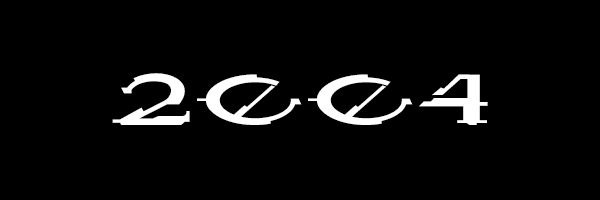
The Year: 2004
If 2003 was Nintendo’s year, then 2004 belonged to Microsoft. Not just with the Xbox, which had its best year yet, but also with regard to Windows releases. Sony and Nintendo also had big years, and both released new handheld consoles, with Nintendo releasing the two-screen Nintendo DS to replace the Gameboy Advance and Sony entering the handheld market with its PlayStation Portable. Sony was still dominating the console war in terms of overall market share, holding something like 70% of the market in 2004, though the Xbox was gaining traction. It made sense then for them to attempt to reach into the massive (and lucrative) handheld market.
One of the biggest trends shaping gaming in 2004 was the advent of HDTVs. Though still expensive, there was a growing market for high-definition televisions in the United States, and by 2004 there were roughly 10 million HDTVs in US households, though only about half of those could actually receive HD programming. The bigger value was for high definition gaming output; all three consoles were capable of doing better than the standard 480i, with the PS2 supporting 480p and upscaled 1080i resolution for games like Gran Turismo 4, while the Gamecube only supported 480p, and the Xbox could output at 720p and 1080i. Growing demand for higher definitions would also fuel a growth in screen sizes, and in 2004 TVs were rapidly decreasing in thickness, weight, and cost.
2004 was also a year of controversies, and players familiar with the name Jack Thompson will remember this as the year he had some of his most prominent crusades against video games. The most prominent of these were related to sexual content – the controversial “Hot Coffee” mod and content in Grand Theft Auto: San Andreas and the potential outrage over nude mods and cheats for The Sims 2.
EA Secures Exclusive Rights to the NFL
When the Dreamcast launched without support from EA in 1999 in the US, Sega was forced to find another partner to deliver sports games for its console and would end up turning to 2K sports. The 2K sports franchises provided steady competition for EA following the death of the Dreamcast, often producing better titles as both developers tried to outdo the other through innovation. In 2004 EA moved to end that challenge by securing a 5-year exclusive agreement with the NFL for the use of the organization, its teams, stadiums, and players in football games. The move would effectively kill the NFL 2K series and the following year 2K would sign a deal with the MLB securing their position as the only third-party developer of MLB games.
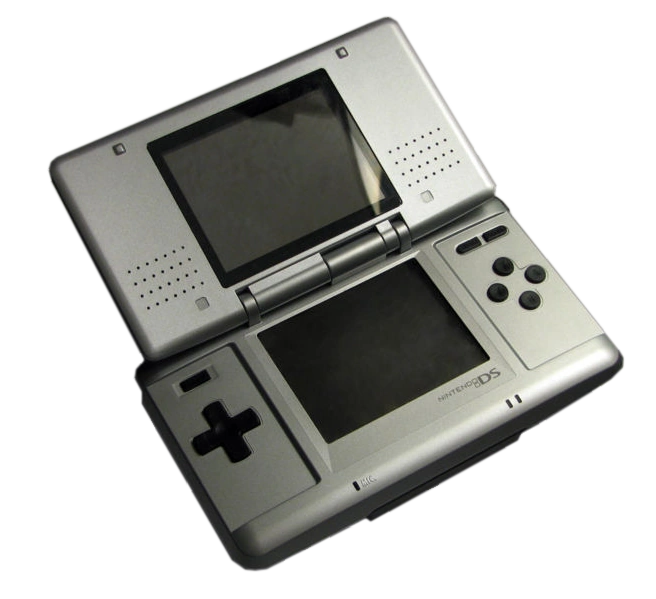
Nintendo Releases the Nintendo DS
After a run of more than 11 years with the original Gameboy, Nintendo picked up the pace with their handhelds, replacing the Gameboy Advance after only 3 years. The Nintendo DS was a dual-screen folding handheld with a touch screen and stylus, adding buttons and more power with better 3D graphics support than the GBA. Nintendo originally tried to market it as complementary to the GBA but this was pretty much bullshit from the get go, as the device was backward-compatible with GBA cartridges.
The Nintendo DS wasn’t nearly as powerful as it could have been – an area where Sony’s competing PSP really tried to distinguish itself – and it’s hard to say that it really needed or made use of both screens, but it had wonderful functionality, good battery life, and a stellar lineup of games. The Nintendo DS launched with an OK lineup, the best of which was Super Mario 64 DS, an updated version of the original Super Mario 64 with more characters and minigames.
The Nintendo DS would go on to be Nintendo’s best-selling console and their best-selling handheld. The DS lite, with its backward compatibility and smaller, sleeker form with larger, brighter screens is a genuinely amazing piece of technology.

The PlayStation Portable Gives Nintendo Some Competition
Sony had been dominating the home console market since the start of the PlayStation and by 2004 had been hungrily eyeing the handheld market with dollar signs in their eyes. In December 2004 they launched they launched the PlayStation Portable (PSP), a handheld gaming console which power-wise was a little worse than the PS2. This still made it the most impressive handheld on the market graphically and the device could connect to the PS2 or a PC and the internet. It ran a proprietary UMD disc format, and could work reasonably well as a portable media player. The PSP had an interesting line-up of games, and would also see tons of use as essentially a portable PlayStation and emulator after players found easy ways to jailbreak the device.
The PSP launched with a solid line-up of titles, including Metal Gear Acid, Dynasty Warriors, Ridge Racer, Tony Hawk Underground 2 Remix, and Darkstalkers Chronicle: the Chaos Tower.
Valve Unleashes Steam Upon the World
Arguably the biggest development of the decade for gaming, Valve launched its Steam gaming service along with Half-Life 2 in 2004, requiring players to log in and download parts of the game to play, even with a physical copy. Originally devised as a way to push updates to their games and manage online play, Steam would eventually become the largest, most important store for PC games in the world. Steam changed not only where video games were sold, but also how – Since 2004 the idea of buying physical copies of games, especially for the PC, has become laughably antiquated.

Half-Life 2
Steam didn’t launch without problems; the service was massively overloaded on its first day, leading to problems actually signing in and playing the games people had paid for. The reason for this overload – and the reason you’d put up with this shit – is because the game you wanted to play was Half-Life 2, one of the most hotly-anticipated sequels of the decade. Half-Life 2 brought back Gordon Freeman for another go at mashing aliens with a crowbar, this time adding vehicles, more scripted events, and a gravity gun which could be used to solve puzzles or just fling saw blades at your enemies. It’s one of the most fun, innovative shooters of all time and it was most reviewers’ game of the year in 2004. People are still asking for a sequel to this day.
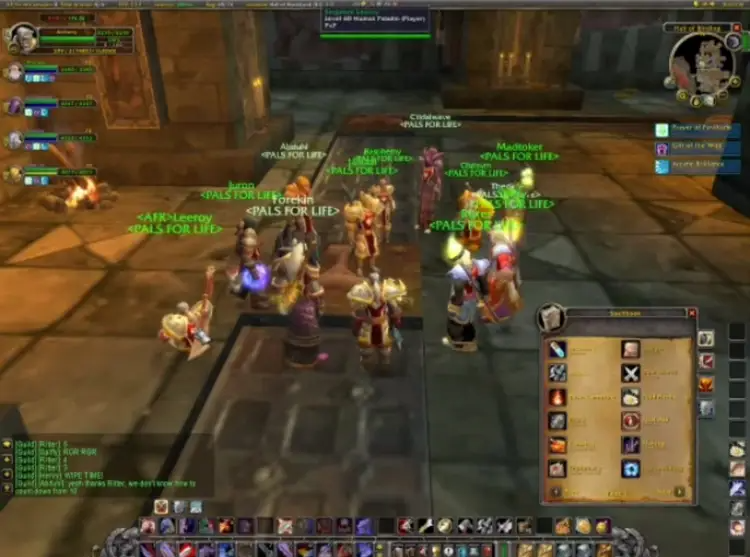
World of WarCraft
World of WarCraft launched late in 2004 and while it wasn’t the biggest game of the year as a result, it would go on to be one of the biggest games of all time and the biggest MMORPG ever, embedding itself in the public consciousness in a way few games have. A fantasy MMORPG based in the same world as WarCraft, WoW gave players the biggest, most accessible MMO to-date, with more reasonable penalties for dying and a number of features which made the game more fun for players playing in short bursts. WoW would go on to be the best-selling PC game in 2005 and 2006 and would have more than 12 million subscribers worldwide in 2010. It’s one of the highest-grossing games of all time.
The Xbox Has a Killer Year
2004 was a phenomenal year for the Xbox, following up Nintendo’s year of haymakers with a few rounds of their own. While a number of these games would also be published on the PC, they’d get a timed exclusivity window or first release on the Xbox, making it the console of choice for players who wanted the games early. Silent Hill 4 and Splinter Cell: Pandora Tomorrow were both big releases for the Xbox, which was now seeing regular cross-platform releases with the PlayStation 2. Of course, when it comes to 2004, there’s one game in particular which defined the year for the Xbox.

Halo 2
Halo: Combat Evolved was a huge success for the Xbox on launch and its sequel was an even bigger deal, with one of the biggest launches of all time. And the game delivered on pretty much every front, with better graphics, a bigger game and story that included playing as the Covenant Arbiter, and the best console multiplayer action ever produced. Halo 2 is an all-timer, and it played a major role in establishing the Xbox as a serious player in the field. It’s hard to understate how big Halo 2 was at the time – it ended up being the second best-selling game in the US in 2004 (after GTA San Andreas), an impressive feat for an Xbox console exclusive. Halo 2 helped catapult the Xbox and the Halofranchise into the stratosphere, making it one of the most recognizable modern IPs in gaming. It was also the first game to really make use of the Xbox online infrastructure Microsoft was working on and helped pioneer online multiplayer for console games and the eventual birth of Xbox Live.

Fable
Forget all the weird ambition and hype; Peter Molyneux’s Fable is a very good action RPG that gave the Xbox some reach into a genre it was sorely lacking. Fable is a fun game with some really interesting NPC interaction mechanics and great humor and it still holds up pretty well today. For my money the first game is the strongest entry in the series; although it doesn’t look as good as the second game it’s got a much stronger fantasy RGP feel and the game’s bow and combat mechanics just feel better. One of Fable’s biggest strengths is its leveling system, which I wish had shown up in more modern games.

Star Wars: Knights of the Old Republic II
The other big Xbox RPG in 2004, KOTOR II gave us a follow-up to the hit BioWare RPG, this time from Obsidian. And what Obsidian turned in was darker and more ambitious than its predecessor by far. Famously unfinished, the game gives us one of the deepest interrogations of the force in any Star Wars media and explores facets of it we’d never seen before. It’s a game whose reach exceeds its grasp and while that leaves the ending feeling pretty rough, what we ended up with is still incredibly compelling.
Jonathan Bernhardt: There’s a restored and expanded content mod which does its best to fix the ending, which is neither here nor there for how the game was received in 2004 — it released in a disastrous launch state. But you should still find a way to play the full thing now! Just maybe not on the recent Switch remaster.

Ninja Gaiden (2004)
Microsoft pulled off a major coup when they convinced Tecmo to make games for the Xbox, mostly by asking them for Ninja Gaiden instead of Dead or Alive, a move which netted them both games. Known for its punishing difficulty, Ninja Gaiden brought the franchise into the modern era and was a standout entry in the action adventure genre. It’s also the game I’d point to as popularizing the modern trend of high-difficulty action games which would really pick up with the release of Dark Souls years later. Game director Itagaki famously hated reducing the game’s difficulty so much that when he finally relented and added an easier setting in 2005’s Ninja Gaiden Black he called it “Ninja Dog.”
Sony Had a Pretty Great Year, Too
Although none of the exclusives for the PlayStation 2 rivaled Halo 2 in terms of sales volume, Grand Theft Auto: San Andreas would end up being the year’s best-selling game, releasing 8 months early on the PS2. The biggest console exclusives for the PlayStation 2 were Gran Turismo 4, Metal Gear Solid 3, and Katamari Damacy.
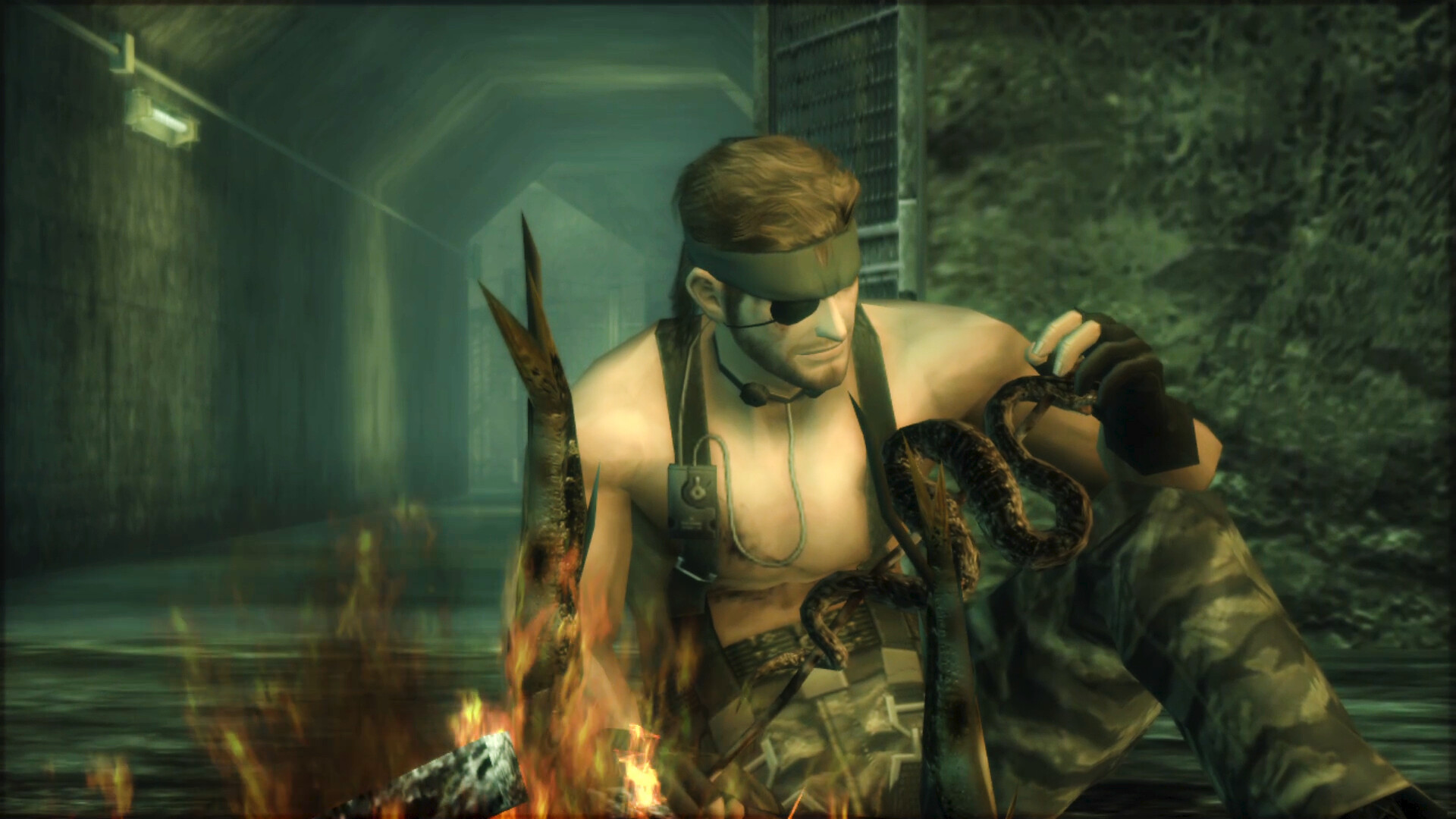
Metal Gear Solid 3: Snake Eater
Hideo Kojima’s third outing in the Solid series takes players back in time to Soviet jungles in 1964, when a young Snake must sneak into an enemy camp and take down his former mentor. MGS3 is even more batshit crazy than its predecessor but that’s all part of the appeal – seeing the wild turns Kojima’s plots will take. As a game MGS3 hews even further from the more grounded, realistic stealth of the burgeoning Splinter Cell series in favor of food/eating mechanics and some of the most imaginative boss battles in video game history. It’s a work of amazing vision and caps off the initial Metal Gear Solid trilogy.
Jonathan Bernhardt: Incredibly innovative game; much, much better in the revised Subsistence editions that would release a bit later. Some big swings and misses here, especially in the initial implementations of the camera and camouflage systems, but the Cold War plot is wildly compelling compared to the sort of near-future muddle that the Metal Gear Solid’s later timeline was turning into.

Katamari Damacy
A game as simple as it is addictive, Katamari Damacy sold at a budget price and captured hearts worldwide. It’s a lovely game filled with quirky humor and interesting ideas. The game helped open up the floodgates for quirky, simple budget games on major consoles. The original game is still an all-timer and while the gameplay is tighter in the sequel, the first game still hits the hardest with its quirky humor and original plotline. The game also has one of the greatest soundtracks of all time, filled with an eclectic mix of great music from all different genres.

Gran Turismo 4
The fourth installment in the Gran Turismo franchise, Gran Turismo 4 offered more cars and more accuracy than ever before. The game was a best seller for Sony in 2004. It’s still regarded as one of the best, if not the best entry in the series thanks to its variety of cars, events, and challenges. GT4 has the best multiplayer of the series, and the game just oozes polish from start to finish. This is the game that delivered on the promise of next-generation graphics in a racing game on Sony’s console.
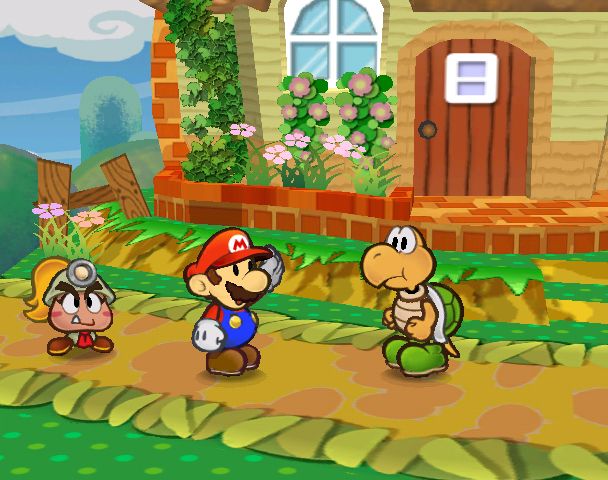
The Gamecube
Nintendo’s Gamecube had a solid year, though the company was splitting its focus between the Gamecube and the release of its new handheld, the Nintendo DS (more on that in a bit). The big releases for the Gamecube in 2004 were Metroid Prime 2: Echoes, a solid sequel to the stellar first 3D outing for Samus, Metal Gear Solid: The Twin Snakes, an outstanding remaster of the original Metal Gear Solid created in the MGS 2 engine, Pikmin 2, a solid sequel to the original, and Paper Mario: The Thousand Year Door, another stellar entry in the Paper Mario Franchise.

Betrayal at the House On the Hill
Another modern classic, Betrayal at the House on the Hill is a horror board game that follows players as they explore an old haunted house, until one inevitably betrays the rest and then everyone else must escape. The base game features 50 possible scenarios, giving players a board game that’s different every time they play. It’s a pretty fun game to sit down and play with some casual players, and while it’s a bit complicated from a setup standpoint, it’s pretty easy to understand and the twist aspect is novel enough you can get a few games out of it with the same people before you think about moving on. It’s not a scary game but it is a solid game for evoking a Halloween mood.
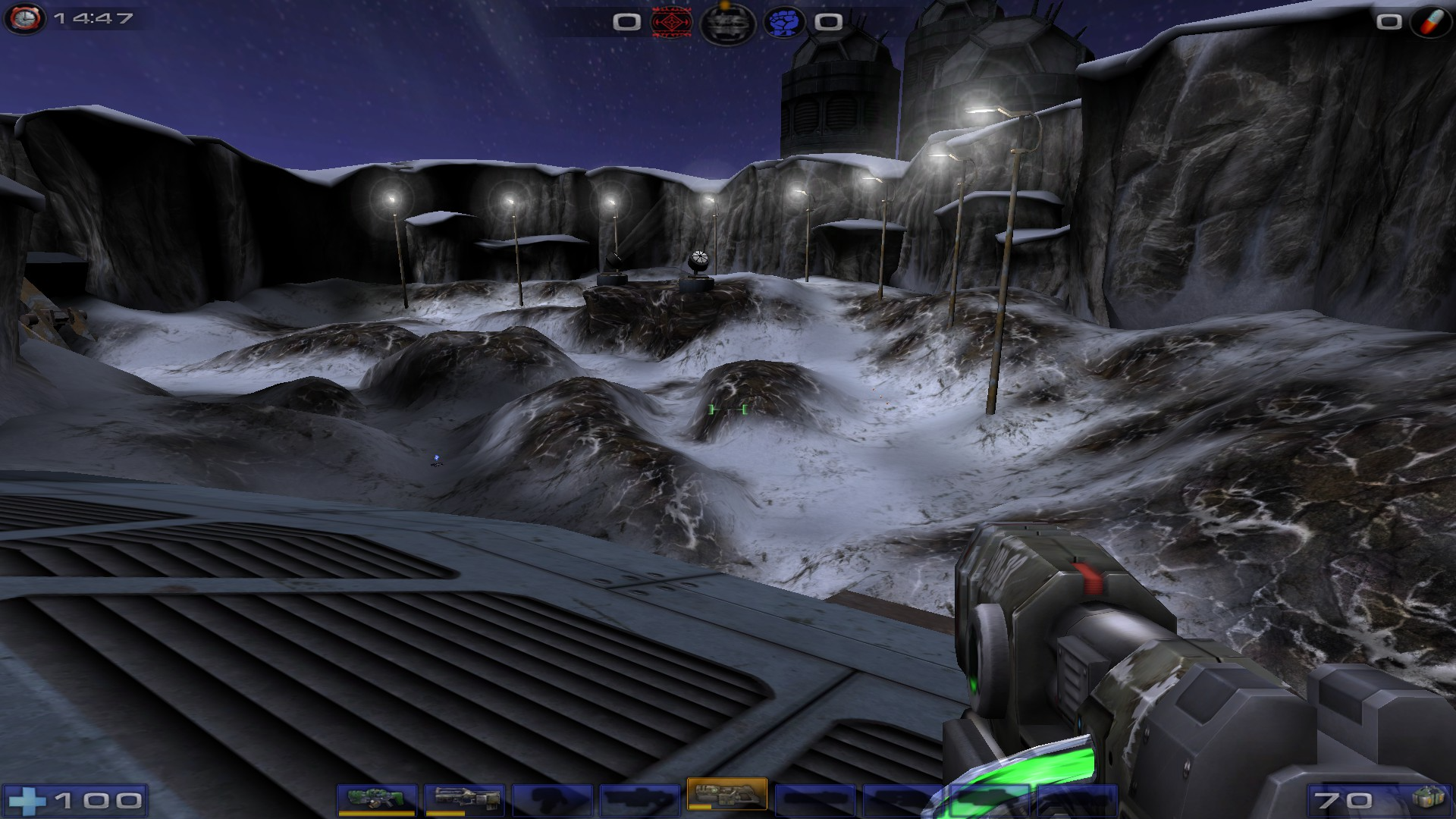
Unreal Tournament 2004
Although not an incredibly innovative game, Unreal Tournament 2004 built on everything its predecessor had and went bigger and better, adding new game modes and bringing back Assault, this time with more varied maps and vehicles. No matter how you liked to play FPS deathmatch, UT2k4 had a mode you’d love. It’s the greatest arena first-person shooter ever made.
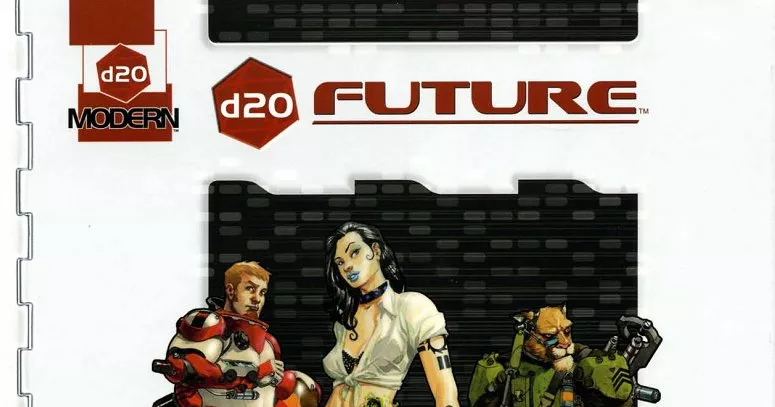
D20 Future
It took Wizards of the Coast a while, but they finally got around to adding their own version of Traveler to the d20 system with d20 Future, an add-on for their d20 Modern which adds rules for playing campaigns in futuristic settings and a number of settings to explore similar to other popular settings, so you can build your own Starship Troopers- or Gundam-like campaign using the d20 rules.

Power Grid
This German game in which players build and manage competing power companies is a classic, and would go on to win the Spiel des Jahres in 2005. Players bid on resources each round and build power plants, connecting them across a massive grid overlaid on a map of the United States or Germany. As the game goes on resource costs change and players build better plants with newer power sources. If there’s a flaw to the game it’s the possibility for runaway wins, but on the whole it’s a fun time with some interesting strategy.
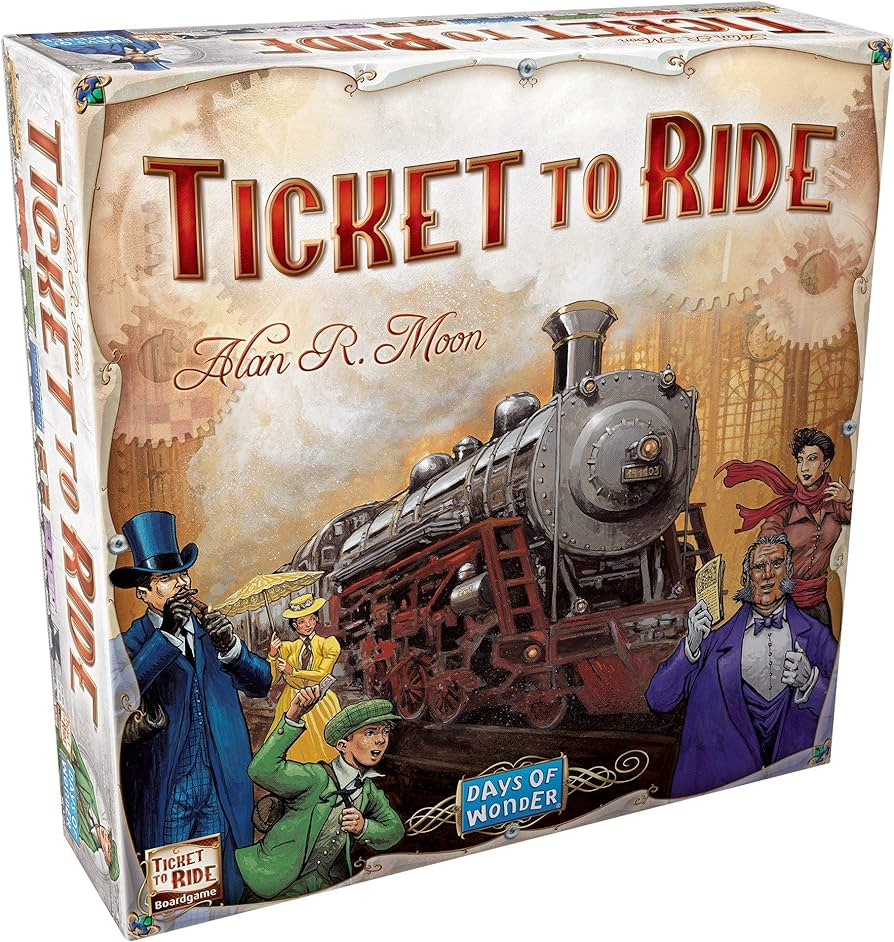
Ticket to Ride
Trains; who doesn’t love trains? And who doesn’t love a board game where you crush your friends’ spirits by criss-crossing America with tiny colored train cars? Winner of the 2004 Spiel de Jahres prize, Ticket to Ride is a game about railroad expansion. Ticket to Ride is one of those great games that causes you to balance your approach: you get some points for laying track and connecting cities, but the big points come from completed routes, and the longer the route the more points it gives. But again, unfinished routes count against you at the end of the game, encouraging players to balance the risk vs reward of going full-on transcontinental. This game has been a perpetual favorite in our house because it’s very easy to learn and very kid-friendly. And really, who doesn’t love trains?

Warhammer 40,000 Fourth Edition
Games Workshop did something completely new with the release of Warhammer 40,000 fourth edition – they kept the existing game in place. After a few years of test rules for third edition – most notably new rules for melee combat – Games Workshop released an updated version of the game which incorporated most of these rules but largely kept the game intact, allowing players to use their existing Codex rulebooks in the new edition, at least until replacements were published. Fourth edition built on the updated, streamlined rules in third edition and improved the game’s melee rules considerably. Early fourth edition codexes would follow in the footsteps of late third edition books by having more customization, though some of this would get streamlined later on. Fourth edition isn’t as fondly remembered as third or fifth as it lacks some of the character in codexes of the former and isn’t as tight as the latter but it also set a solid precedent for updating the game without throwing everything out. It’s mechanically much stronger than third edition, and the edition starter box is worth a shout, as the crashed lander terrain is some really great stuff.

Red Dead Revolver
Rockstar’s Red Dead franchise kicked off with Red Dead Revolver in May 2004. The original game in the series lacked the open world which would define later games (and really come to just be Rockstar’s thing), but had a solid plot and some interesting mechanics.
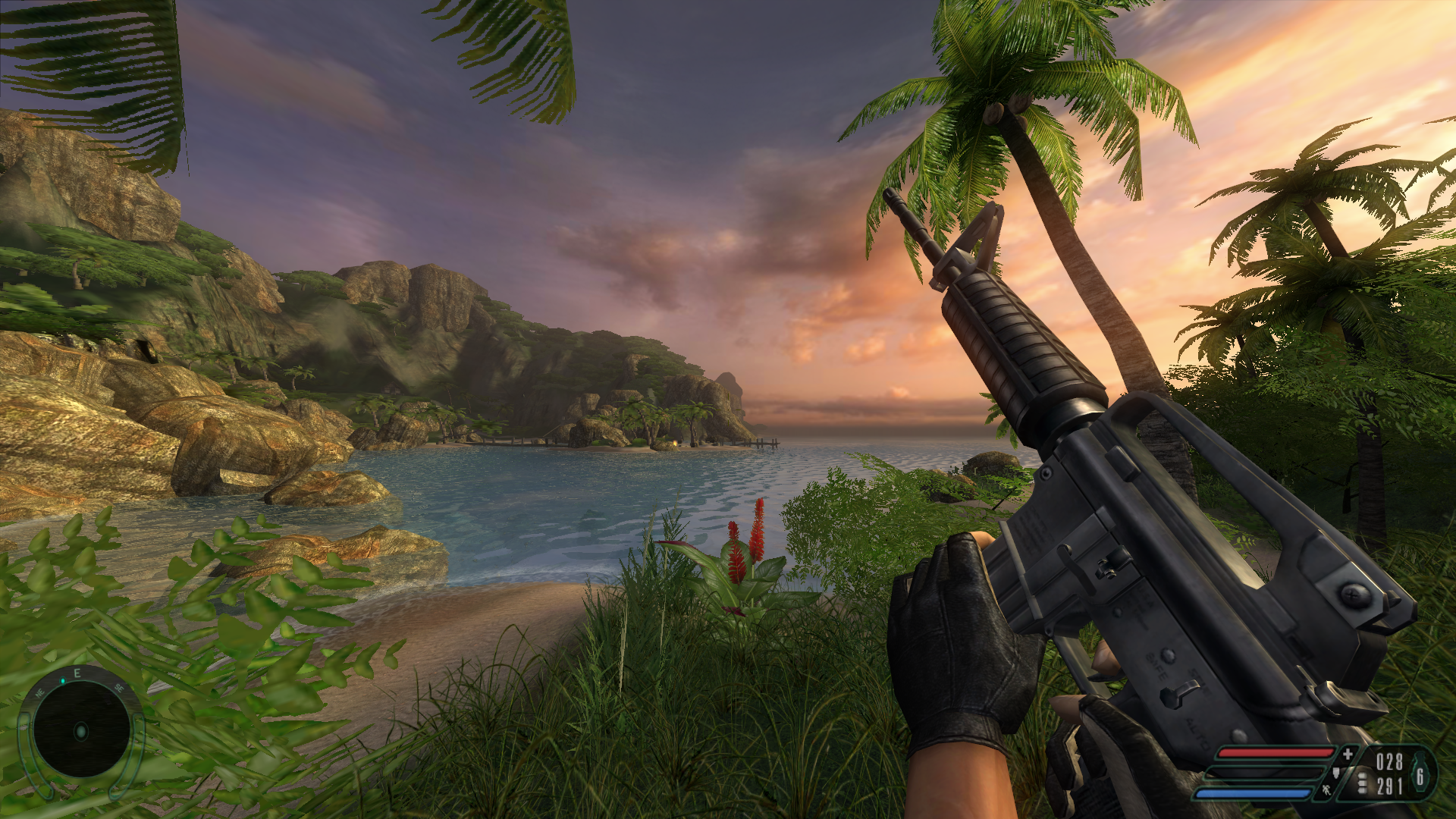
Far Cry
The original Far Cry released for Windows in March 2004, dumping players into an open-world FPS that at the time was technically very impressive and visually stunning. It’d kick off a series of interesting and, at times, controversial games, all featuring the series’ trademark semi-open-ended approach to exploration and tackling outposts filled with armed opponents. Graphically the game still looks pretty good 18 years later, which is fitting given that Far Cry would essentially replace Crysis as the flagship series for Crytek.
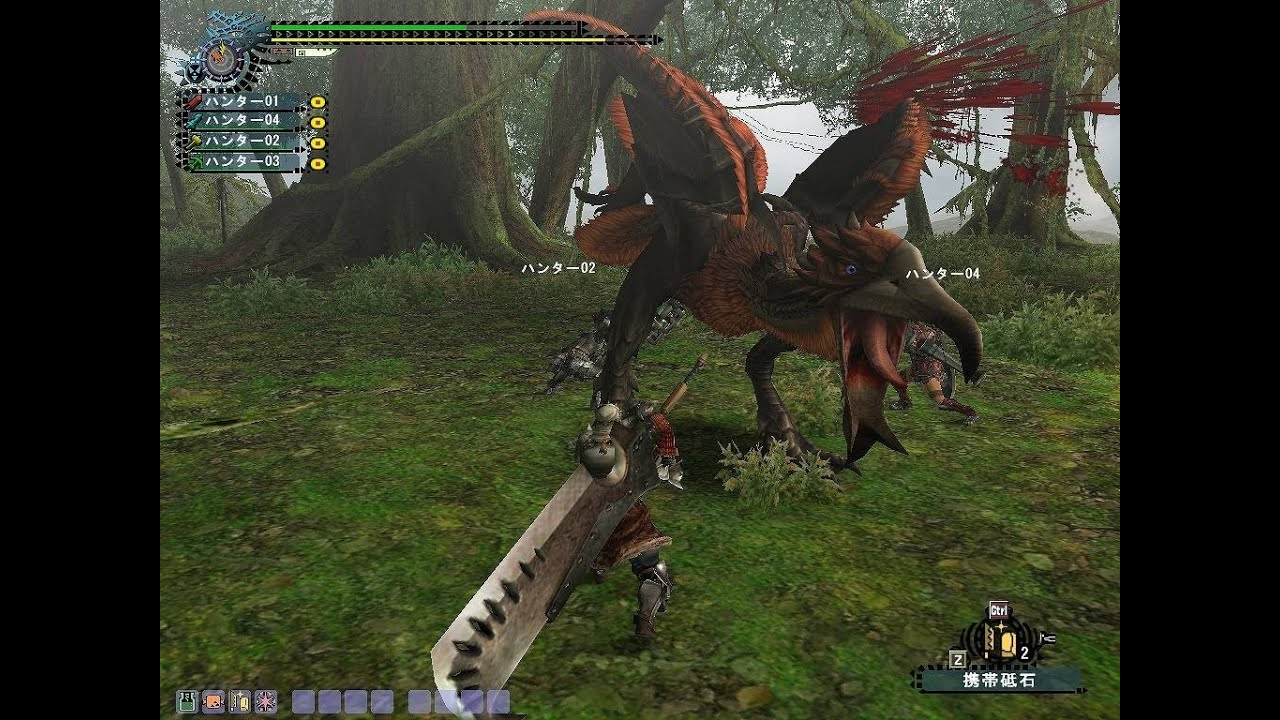
Monster Hunter
The original Monster Hunter released on the PlayStation 2 in 2004. It’s an RPG in which players take the role of a hunter, wandering out into the field to kill and capture monsters, craft weapons and items, and then kill bigger and nastier monsters. The Monster Hunter franchise is Capcom’s second largest today, behind only the Resident Evil franchise. This first game in the series isn’t amazing, but it’s a solid start and a precursor for what was to come.

Grand Theft Auto: San Andreas
Released for the PlayStation 2 in late 2004 and the Xbox and PC in early 2005, Grand Theft Auto was the year’s biggest game in more ways than one. As a Grand Theft Auto game, it brought the action to the West Coast, taking us from the neon-colored 1980s of Vice City’s pseudo-Miami to the sun-bleached streets of pseudo-Los Angeles in the 1990s. San Andreas was even bigger than its predecessor, giving us a larger, more detailed world with a new story to explore full of big-names in its voice cast. It’s the best of the sixth generation GTA trilogy and an all-timer.
Unfortunately, the game was also famous for its controversy – specifically, some cut content around a sex minigame, removed to get the game a Mature rating from the ESRB. But the minigame was still there in the game files, and this content was restored later by modders for the Windows version, leading to outrage and bans for the game until Rockstar could release modified versions with the code fully removed.

The Sims 2
Maxis released the sequel to its immensely popular sim game to Windows in 2004 and to home consoles a year later. The Sims 2 follows the same gameplay as the original, but this time added proper 3d graphics, more social interactions, careers, and aging. Once again the game was a massive success, becoming one of the best-selling PC games of all time. There may be other games on this list which seem like a bigger deal, but The Sims 2 is bigger than almost all of them, building a massive audience of more casual gamers games like Halo and Metal Gear Solid could never touch.

Doom 3
Doom had been missing from the gaming landscape at large since 1994, though there were a number of ports for the game to other platforms. That changed in 2004 when id Software released Doom 3, updating the game with 3D graphics and a horror atmosphere focused on adventuring through dark corridors with only a flashlight for illumination. The game acted as a reboot of the series and sold very well on the PC before being ported to the Xbox the following year. Doom 3 re-established id as a major player in the FPS space and the engine behind the game would end up being the base for a number of other games.
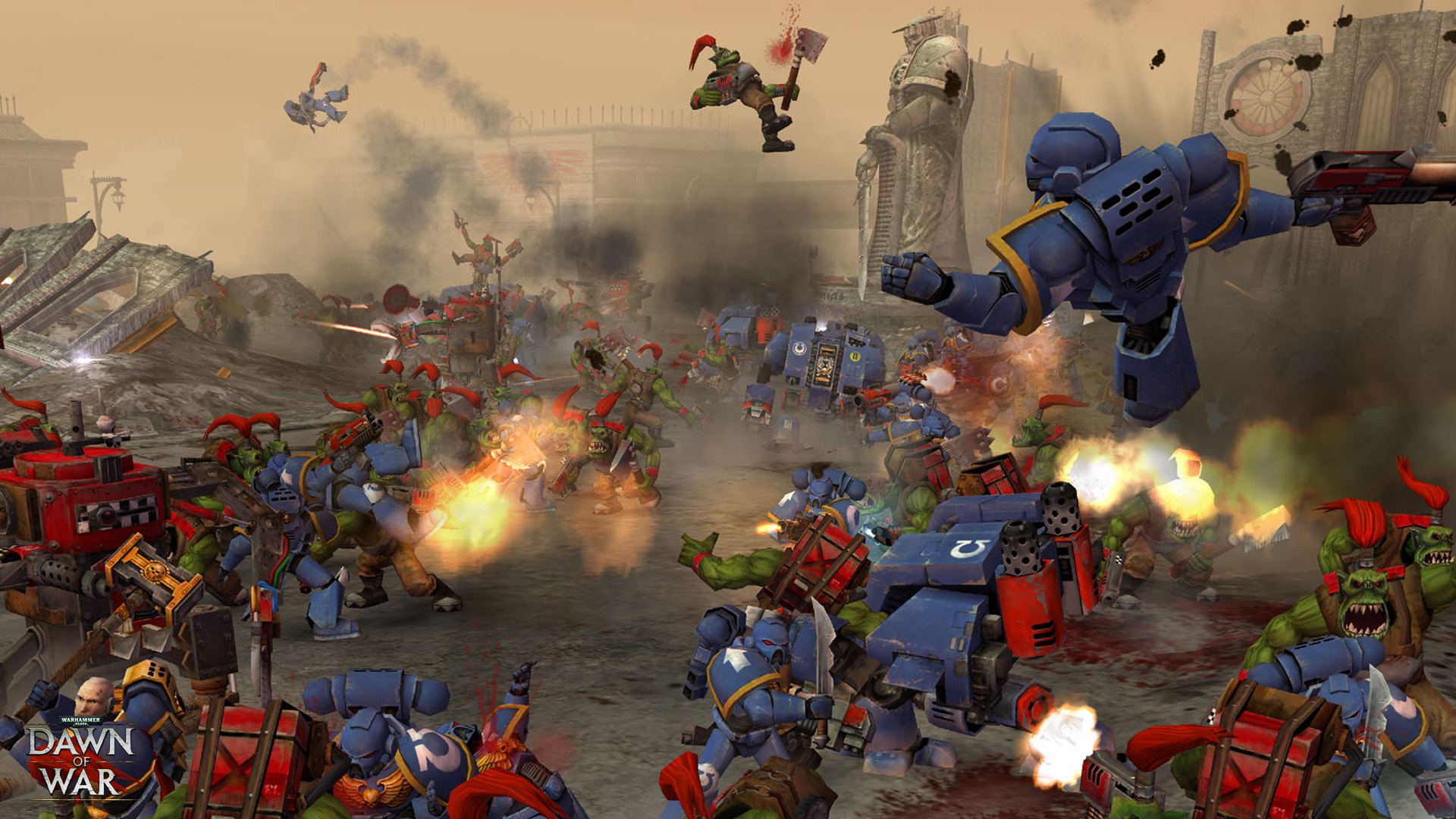
Warhammer 40,000: Dawn of War
There were Warhammer computer games before 2004’s Dawn of War, but they were largely mediocre outings predating the era of 3D graphics (except for 2003’s Fire Warrior, which was just bad). Relic Entertainment changed that with 2004’s Dawn of War, the first real Warhammer video game of note. This 3D RTS has players control one of four factions – Space Marines, Eldar, Orks, and Chaos – building bases, capturing territory, and destroying enemy units. The game featured a solid single-player campaign and some great multiplayer gameplay, plus an amazing intro cinematic and mod support that gave it a dedicated community. The game was so popular it caught Games Workshop by surprise, and they ended up creating quite a bit of tabletop content around the chapter created for the game – the Blood Ravens were originally conceived when Games Workshop wouldn’t grant Relic permission to use an existing chapter.
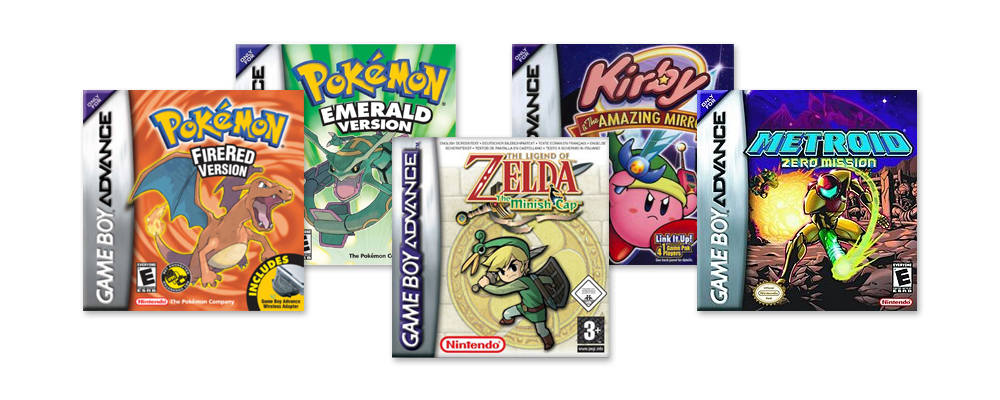
The Final Year of the Gameboy Advance
The Nintendo DS might have signified that Nintendo was moving on from its handheld, but the handheld’s days were far from over. Nintendo had released the handheld’s best version just a year prior – the Gameboy Advance SP, and publishers were still releasing great games for the GBA well into 2006. Nintendo themselves released a number of great games for the GBA in 2004, including The Legend of Zelda: The Minish Cap, Kirby and the Amazing Mirror, their outstanding remake of the original Metroid, and two new Pokemon games – Emerald gave us the best version of the Ruby/Sapphire generation, and Fire Red/Leaf Green updated the original games to the new gen. And the best part was that the backward compatibility of the Nintendo DS made these all great DS games as well.
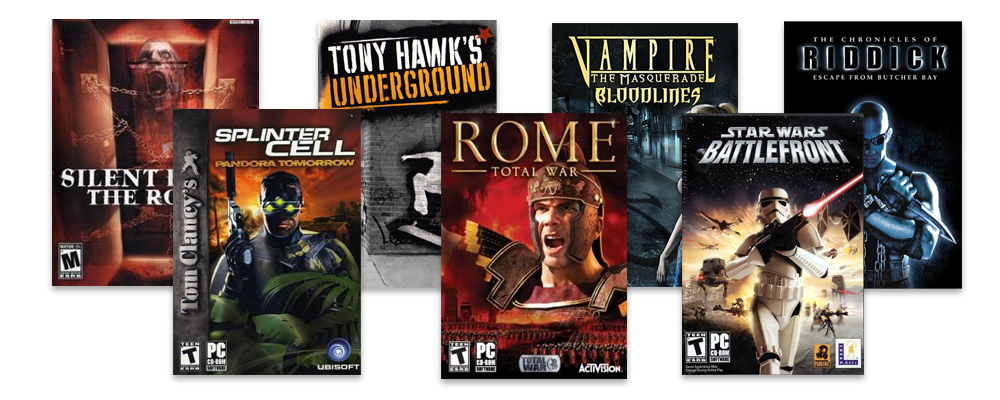
Other Great Video Games
It’s hard to overstate what a strong year 2004 was for games, and I could have easily devoted another dozen or so entries in this list to very strong games that year. The one most likely to get people screaming at me in the comments here is ROME: Total War, which really showed off Creative Assembly’s prowess at building great strategy games. Vampire the Masquerade: Bloodlines was a very good RPG from Troika games which has often had the “flawed masterpiece” label hung upon it. The Chronicles of Riddick: Escape from Butcher Bay was a very good FPS which defied the odds of being a video game tie-in game based on a mediocre movie. And Splinter Cell: Pandora Tomorrow wasn’t just a solid update on the first game but added an innovative mercs-vs-spies mutiplayer mode that was a blast to play.
Why It Was the Best Year in Gaming
If you were to tell me that this competition was really between 1998 and 2004, I’d believe you. Few years are stuffed with as many huge releases and amazing games as 2004, and 2004 manages to have both some of the best and most important video games of all time and a number of big, fun tabletop releases. There are a number of amazing games we didn’t even get to in our list – bangers like Vampire: The Masquerade Bloodlines, Star Wars: Battlefront, Alien Hominid, Zelda: Four Swords Adventures, Chronicles of Riddick: Escape from Butcher Bay, Metroid: Zero Mission, and Rome: Total Warare all notable releases which would have seen more mention in any other year but get to be end-of-article footnotes next to the likes of Halo 2, Half-Life 2, and San Andreas.
It’s hard to argue with 2004 as the eventual winner in our competition, but there’s always a chance of an upset somewhere.
This article is part of a larger series on the best year in gaming. For more years, click this link. Have any questions or feedback? Drop us a note in the comments below or email us at contact@goonhammer.com.
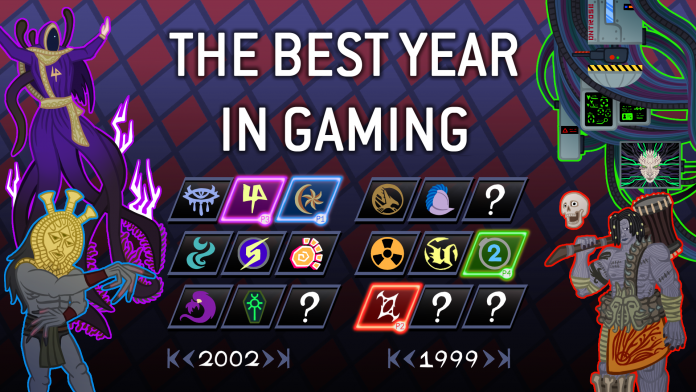


You must be logged in to post a comment.